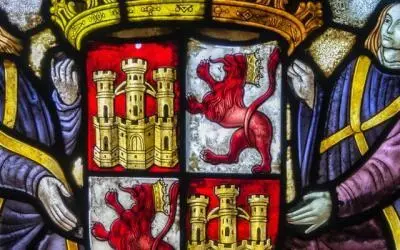Decorations on a Coat of Arms
The topic of heraldry and heraldic research is a fascinating one, but it can be hard to know where to start when it comes to understanding the meaning and significance of the heraldic representations and decorations on a coat of arms. The decorations on a coat of arms contain specific elements which can be broadly defined as follows:
The Crest
This appears at the top of the coat of arms and would have originally been worn on a knight’s helmet. This crest is shown resting on a wreath, coronet or cap. The wreath represents the twisted scarf which binds the crest to the helmet.
The Helmet
This part of the coat of arms shows the rank of the owner. It is traditionally gold and faces the front. That of a peer is silver with gold bars facing sideways. The helmet on a knight or baronet is steel without bars with the vizor raised and facing to the front. Steel is used for the helmet of an untitled person, with the vizor closed and facing to the side.
The Mantling
This hangs from the helmet on the coat of arms and represents the cloth originally protecting the crusading knight from the sun.The raggedness potentially indicated sword cuts received in battle.
The Supporters
These are figures of people or animals and are placed on either side of the shield. Originally, these may have represented the knights pages who guarded his shield before battle.
The Motto
This is usually a short sentence or phrase and is likely to have originated form the medieval knight’s war cry. It serves as a rule or encouragement and may be a phrase such as ‘Stand Fast’, ‘Victory’ or ‘Death’. A complete coat of arms includes the shield and the elements we mention here is called an ‘achievement’.
Find out if we have the coat of arms and surname history for your surname.



